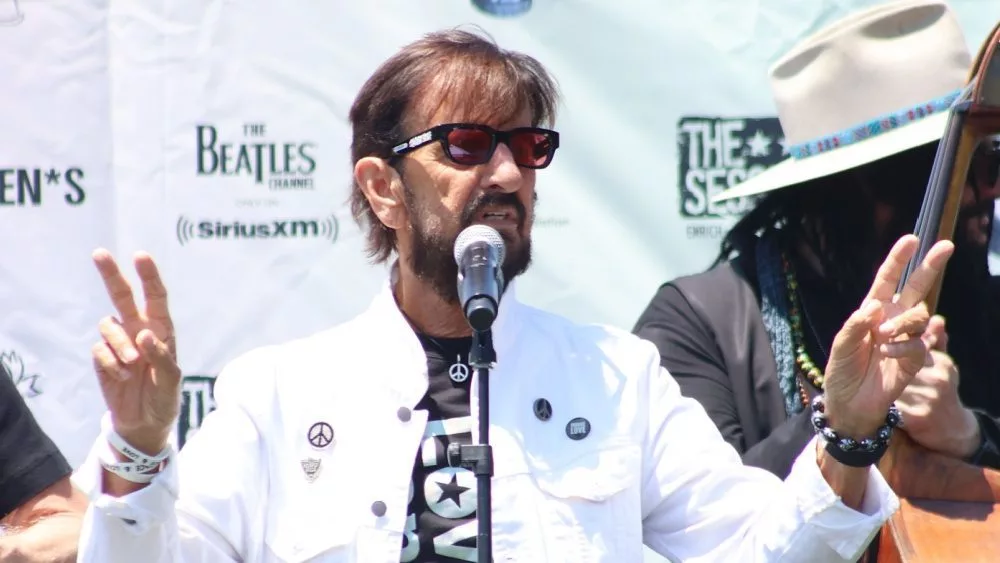WASHINGTON – (AP) President Donald Trump says Abu Bakr al-Baghdadi is dead after a U.S. military operation in Syria targeted the Islamic State group leader.
Trump says in a statement to the nation from the White House’s Diplomatic Room that “al-Baghdadi is dead” — fulfilling the top national security priority of his administration.
He says no U.S. personnel were lost in the mission.
Al-Baghdadi presided over IS’s global jihad and became arguably the world’s most wanted man.
The announcement comes as Trump has been on the receiving end of bipartisan criticism in Washington following the recent pullback of U.S. troops from northeastern Syria. Critics fear that move will allow the militant group to regain strength after it had lost vast stretches of territory it had once controlled.
President Donald Trump says that watching the raid that killed Islamic State group leader Abu Bakr al-Baghdadi in Syria as it was underway felt “as though you were watching a movie.”
And he’s suggesting that the video be released to the public to dissuade al-Baghdadi’s followers.
Trump says that he watched much of the mission unfold from the White House Situation Room on Saturday night.
Trump says at the White House on Sunday that the U.S. had al-Baghdadi under surveillance for several weeks. He says that during the raid, U.S. forces flew low and fast, and were met with gunfire at points.
Trump is also suggesting that the footage of the raid may be released publicly so that the world knows al-Baghdadi spent his final moments “crying, “whimpering” and “screaming.”
President Donald Trump says Islamic State group leader Abu Bakr al-Baghdadi died after running into a dead-end tunnel and igniting an explosive vest, killing himself and three of his young children
Trump is describing the U.S. raid in Syria that killed perhaps the world’s most wanted man.
The president says during remarks from the White House’s Diplomatic Room that al-Baghdadi spent his last moments in utter fear and claims that the IS leader was “whimpering and crying” and died as “a coward, running and crying.”
Trump had teased the announcement with a tweet Saturday night, declaring that “Something very big has just happened!”
He says the U.S. received immediate and positive identification on the body and that the world is now a much safer place.
____________________________________________________________________________________________________________
A U.S. official told The Associated Press late Saturday that al-Baghdadi was targeted in Syria’s northwestern Idlib province. The official said confirmation that the IS chief was killed in an explosion was pending. No other details were available. The official was not authorized to publicly discuss the strike and spoke on condition of anonymity.
President Donald Trump teased a major announcement, tweeting Saturday night that “Something very big has just happened!” A White House spokesman, Hogan Gidley, said Trump would make a “major statement” at 9 a.m. EDT Sunday.
A senior Iraqi security official told the AP that Iraqi intelligence played a part in the operation. Al-Baghdadi and his wife detonated explosive vests they were wearing during the U.S. commando operation, according to the official, who was not authorized to publicly discuss the sensitive information and spoke on condition of anonymity. He added that other IS leaders were killed in the attack.
If confirmed, the operation’s success could prove a major boost for Trump. The recent pullback of U.S. troops he ordered from northeastern Syria raised a storm of bipartisan criticism in Washington that the militant group could regain strength after it had lost vast stretches of territory it had once controlled.
The Syrian Observatory for Human Rights, a Syria war monitor, reported an attack carried out by a squadron of eight helicopters accompanied by a warplane belonging to the international coalition on positions of the Hurras al-Deen, an al-Qaida-linked group, in the Barisha area north of Idlib city, after midnight on Saturday. IS operatives were believed to be hiding in the area, it said.
It said the helicopters targeted IS positions with heavy strikes for about 120 minutes, during which jihadists fired at the aircraft with heavy weapons. The Britain-based Observatory, which operates through a network of activists on the ground, documented the death of 9 people as a result of the coalition helicopter attack. It was not immediately known whether al-Baghdadi was one of them, it said.
Al-Baghdadi’s presence in the village, a few kilometers from the Turkish border, would come as a surprise, even if some IS leaders are believed to have fled to Idlib after losing their last sliver of territory in Syria to U.S.-allied Kurdish forces in March. The surrounding areas are largely controlled by an IS rival, the al-Qaida-linked Hayat Tahrir al-Sham, or HTS, although other jihadi groups sympathetic to IS operate there. Unverified video circulated online by Syrian groups appeared to support the Observatory claim that the operation occurred in Barisha.
The intelligence source on the militant leader’s whereabouts could not be immediately confirmed, but both Iraqi and Kurdish officials claimed a role. The Turkish military also tweeted that before the operation in Idlib, it exchanged “information” and coordinated with U.S. military authorities.
Kurdish forces appeared ready to portray al-Baghdadi’s death as a joint victory for their faltering alliance with the U.S., weeks after Trump ordered American forces to withdraw from northeastern Syria, all but abandoning Washington’s allies to a wide-ranging Turkish assault.
The commander of the Kurdish-led Syrian Democratic Forces, Mazloum Abdi, tweeted: “Successful& historical operation due to a joint intelligence work with the United States of America.”
Al-Baghdadi has led IS for the last five years, presiding over its ascendancy as it cultivated a reputation for beheadings and attracted tens of thousands of followers to a sprawling and self-styled caliphate in Iraq and Syria. He remained among the few IS commanders still at large despite multiple claims in recent years about his death and even as his so-called caliphate dramatically shrank, with many supporters who joined the cause either imprisoned or jailed.
His exhortations were instrumental in inspiring terrorist attacks in the heart of Europe and in the United States. Shifting away from the airline hijackings and other mass-casualty attacks that came to define al-Qaida, al-Baghdadi and other IS leaders supported smaller-scale acts of violence that would be harder for law enforcement to prepare for and prevent.
They encouraged jihadists who could not travel to the caliphate to kill where they were, with whatever weapon they had at their disposal. In the U.S., multiple extremists have pledged their allegiance to al-Baghdadi on social media, including a woman who along with her husband committed a 2015 massacre at a holiday party in San Bernardino, California.
With a $25 million U.S. bounty on his head, al-Baghdadi has been far less visible in recent years, releasing only sporadic audio recordings, including one just last month in which he called on members of the extremist group to do all they could to free IS detainees and women held in jails and camps.
The purported audio was his first public statement since last April, when he appeared in a video for the first time in five years. In that video, which included images of the extremist leader sitting in a white room with three others, al-Baghdadi praised Easter Day bombings that killed more than 250 people and called on militants to be a “thorn” against their enemies.
In 2014, he was a black-robed figure delivering a sermon from the pulpit of Mosul’s Great Mosque of al-Nuri, his only known public appearance. He urged Muslims around the world to swear allegiance to the caliphate and obey him as its leader.
“It is a burden to accept this responsibility to be in charge of you,” he said in the video. “I am not better than you or more virtuous than you. If you see me on the right path, help me. If you see me on the wrong path, advise me and halt me. And obey me as far as I obey God.”
Though at minimum a symbolic victory for Western counterterrorism efforts, his death would have unknown practical impact on possible future attacks. He had been largely regarded as a symbolic figurehead of the global terrorist network and was described as “irrelevant for a long time” by a coalition spokesman in 2017.
Al-Baghdadi was born Ibrahim Awwad Ibrahim Ali al-Badri al-Samarrai in 1971 in Samarra, Iraq, and adopted his nom de guerre early on. Because of anti-U.S. militant activity, he was detained by U.S. forces in Iraq and sent to Bucca prison in February 2004, according to IS-affiliated websites.
He was released 10 months later, after which he joined the al-Qaida branch in Iraq of Abu Musab al-Zarqawi. He later assumed control of the group, known at the time as the Islamic State of Iraq.
After Syria’s civil war erupted in 2011, al-Baghdadi set about pursuing a plan for a medieval-style Islamic State, or caliphate. He merged a group known as the Nusra Front, which initially welcomed moderate Sunni rebels who were part of the uprising against Syrian President Bashar Assad, with a new one known as the Islamic State of Iraq and the Levant. Al-Qaida’s central leadership refused to accept the takeover and broke with al-Baghdadi.
Al-Baghdadi’s fighters captured a contiguous stretch of territory across Iraq and Syria, including key cities, and in June 2014, it announced its own state — or caliphate. Al-Baghdadi became the declared caliph of the newly renamed Islamic State group. Under his leadership, the group became known for macabre massacres and beheadings —often posted online on militant websites — and a strict adherence to an extreme interpretation of Islamic law.
Over the years, he has been reported multiple times to have been killed, but none has been confirmed. In 2017, Russian officials said there was a “high probability” he had been killed in a Russian airstrike on the outskirts of Raqqa, but U.S. officials later said they believed he was still alive.






